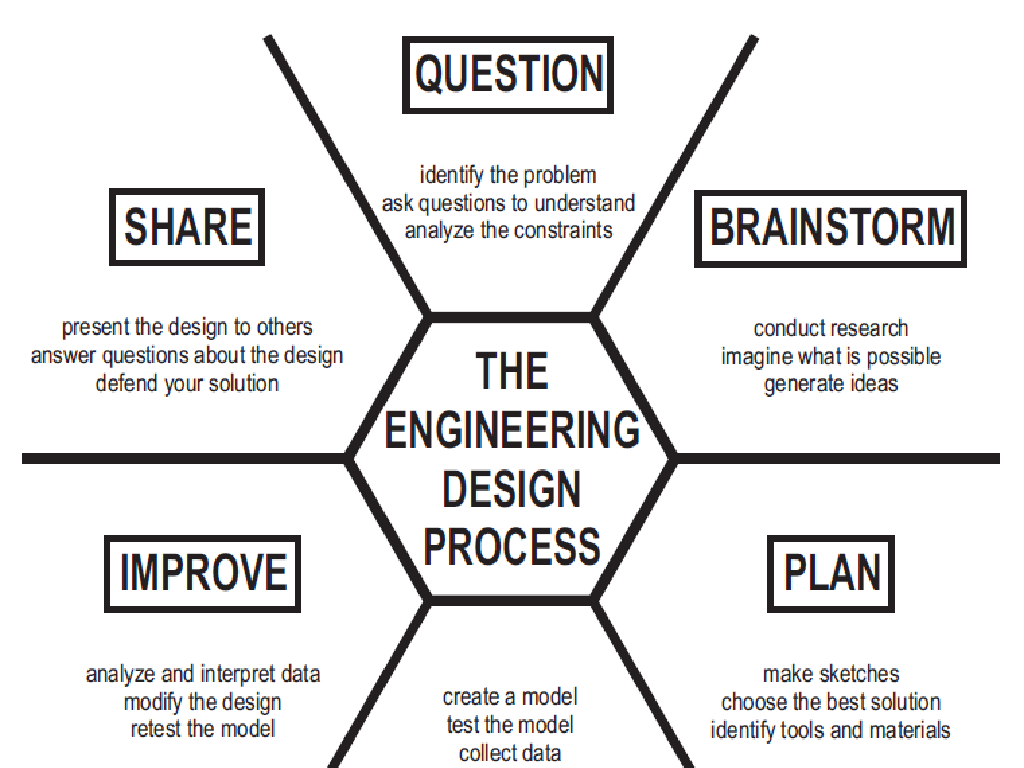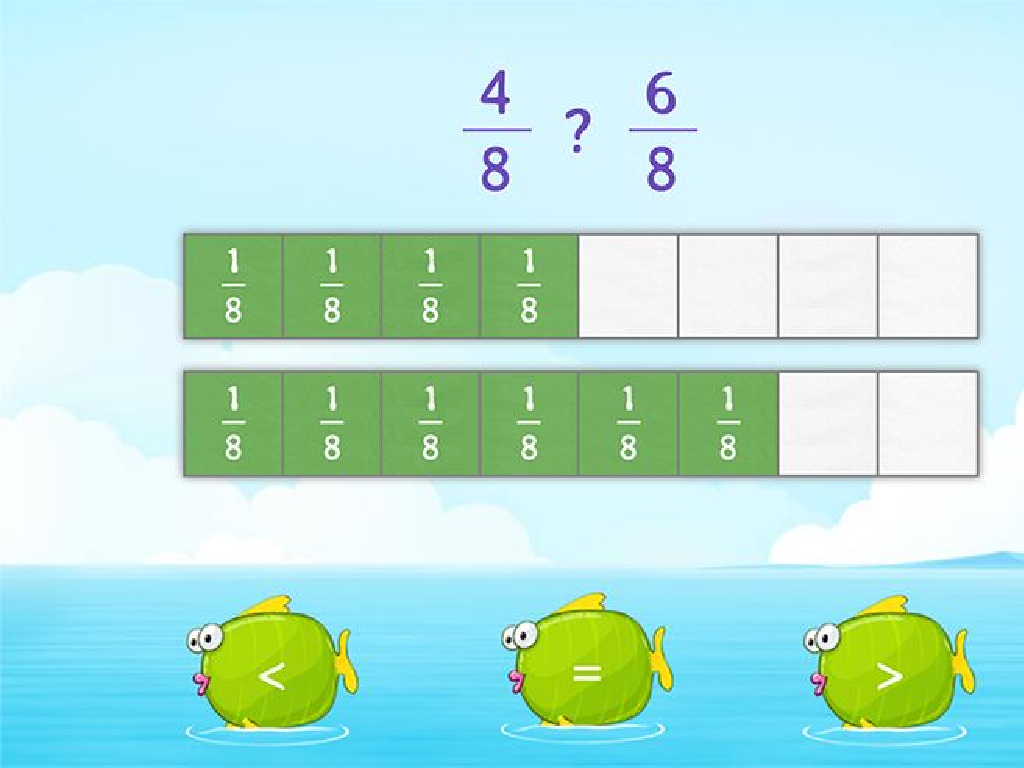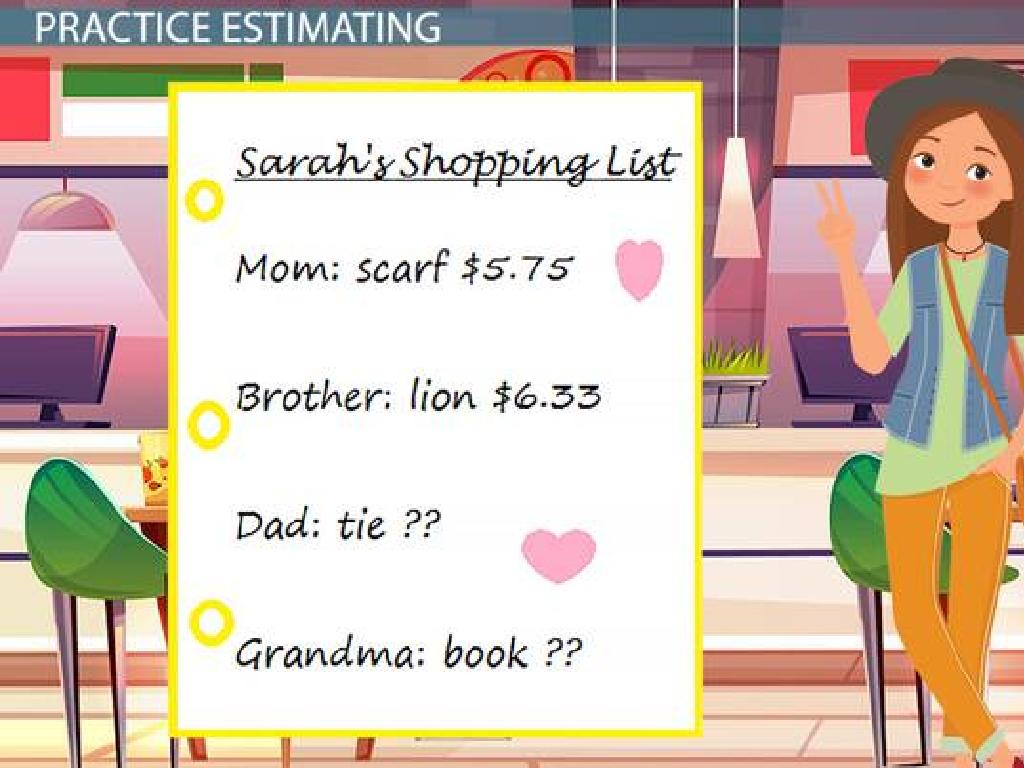Identify Numbers - 0 To 5
Subject: Math
Grade: Kindergarten
Topic: Numbers To 5
Please LOG IN to download the presentation. Access is available to registered users only.
View More Content
Welcome to Numbers!
– Today’s focus: Numbers 0 to 5
– What numbers do you know?
– Can you shout out any numbers from 0 to 5?
– Numbers help us count
– We use numbers to count objects, like 1 apple, 2 apples…
– Numbers show how many
– If you have 3 crayons, the number 3 tells us the quantity
|
This slide is designed to introduce Kindergarten students to the concept of numbers, specifically from 0 to 5. Start the lesson by engaging the students with a question about what numbers they already know, encouraging them to participate and share. Explain that numbers are not just symbols; they are tools we use to count things in our world. Use tangible examples like counting apples or crayons to illustrate how numbers represent quantity. This will help the students relate numbers to their everyday experiences. For the activity, you can have objects for them to count, number flashcards for recognition, and simple counting games. The goal is to make the students comfortable with recognizing and understanding numbers 0 to 5.
Meet the Numbers 0 to 5
– Zero (0): An empty plate
– 0 means nothing, like no cookies on your plate.
– One (1): The start of numbers
– 1 is the first number we count, like having just one toy.
– Two (2): A pair of shoes
– 2 is for things that come in pairs, like your two eyes.
– Three (3): A triangle’s sides
– 3 is the number of sides on a triangle, like a pizza slice.
– Five (5): One full hand
– 5 is the total fingers on one hand, like when you wave hello.
|
This slide introduces kindergarteners to the numbers 0 to 5 with relatable examples. Zero is represented as an empty plate, emphasizing the concept of ‘nothing’ or ‘no quantity.’ One is described as the beginning of all numbers, highlighting its uniqueness. Two is associated with common pairs, like shoes, to illustrate the concept of ‘two.’ Three is likened to a triangle, a shape they are familiar with, to help them understand the number. Four is skipped in the outline but could be represented by the four wheels on a car, a tangible example for children. Five is compared to the fingers on one hand, a visual and physical representation they can easily relate to. Encourage students to bring objects or draw pictures that represent these numbers for the next class to reinforce their understanding.
Counting Fun with Objects!
– Count visible items together
– Count apples from 0 to 5
– Let’s count: 0 apples, 1 apple, up to 5 apples
– Stack blocks up to 5
– How high can we stack? 1, 2, 3, 4, 5 blocks!
– Understand numbers 0 to 5
– Recognize and say numbers 0, 1, 2, 3, 4, 5
|
This slide is designed to engage Kindergarten students in a hands-on counting activity. Start by counting objects that are visible in the classroom to make it interactive. Use apples to demonstrate counting from 0 to 5, emphasizing the concept of zero as the starting point. Introduce a fun activity with blocks, encouraging the children to stack them while counting up to five. This will help them visualize the numbers and understand quantity. Reinforce the learning by having the students recognize and say the numbers out loud. The goal is to solidify their understanding of the numbers 0 to 5 through tangible experiences and repetition.
Number Match Game: Counting Fun!
– Match numbers to object groups
– Find the group with 3 teddy bears
– Look for a group with exactly 3 teddies
– Match number 4 to a toy group
– Which group has 4 toys? Count carefully!
– Share your matches with the class
|
This interactive game is designed to help Kindergarten students practice identifying numbers 0 to 5 by matching them to groups of objects. Start by explaining the concept of matching numbers to quantities. Then, present the students with images or physical groups of objects, such as teddy bears, and ask them to find the group that corresponds to the number 3. Next, challenge them to find a group that has the same number of toys as the number 4. Encourage the students to count out loud and use their fingers if necessary. After they’ve made their matches, ask them to share their findings with the class. This activity will reinforce their counting skills and number recognition in a fun, engaging way. Prepare several examples beforehand and ensure that there are enough materials for each student to participate actively.
Writing Numbers 0 to 5
– Practice tracing numbers
– Use your finger to follow the dotted lines
– Start with number 0
– It looks like a round circle
– Trace numbers 1 to 5
– Follow the lines to write each number
– Take your time
– No rush, accuracy is key
|
This slide is aimed at helping Kindergarten students practice writing numbers by tracing. Start by explaining the importance of getting familiar with the shapes of numbers. Demonstrate tracing numbers on the board, if possible, and encourage students to use their fingers to follow along on their own worksheets. Emphasize the shape of each number, especially the roundness of zero, and the specific strokes for 1 to 5. Remind them to take their time to ensure they are tracing accurately. This activity will help develop their fine motor skills and number recognition. Provide assistance as needed and praise their efforts to build confidence.
Number Song and Dance
– Sing a numbers song
– We’ll learn a catchy song to remember numbers.
– Dance and count 0 to 5
– Moving to music helps us learn to count.
– Music makes remembering fun
– Songs help us memorize numbers easily.
– Practice counting daily
|
This slide introduces a fun and interactive song and dance activity to help kindergarteners learn and memorize numbers 0 to 5. The activity is designed to engage students through auditory and kinesthetic learning styles. The teacher should play a simple and catchy song about numbers that the children can easily follow along with. As the song plays, the teacher will lead the students in a dance that includes counting out loud from 0 to 5. This multisensory approach aids in memory retention and makes learning enjoyable. Encourage the students to practice the song and dance at home to reinforce their counting skills. The repetition of the song and movements will help solidify their understanding of the number sequence.
Class Activity: Number Hunt
– Let’s go on a Number Hunt!
– Find numbers 0 to 5 in our room
– Look high and low for numbers on objects
– Team up with a buddy for the hunt
– Cooperation makes the hunt more fun
– Can you spot all the numbers?
– Check off each number as you find it
|
This activity is designed to be a fun and interactive way for students to recognize and identify numbers 0 to 5 in their immediate environment. Before starting, ensure that the numbers are placed in both easy and slightly challenging locations to keep the activity engaging. Pair up students to promote teamwork. Provide each pair with a checklist to mark off the numbers as they find them. Consider having small rewards for each pair that successfully finds all the numbers. This activity also serves as a way to develop the students’ observational skills and their ability to work cooperatively. After the hunt, gather the students and discuss where they found the numbers and how they figured out each one. This reinforces number recognition and encourages sharing experiences.
Review and Goodbye: Numbers 0 to 5
– Celebrating our Number Hunt
– Let’s count 0 to 5 together
– Practice makes perfect! Counting in unison helps us remember.
– You’ve all done wonderfully today
– Excited for our next number adventure
– Next time, we’ll explore even bigger numbers!
|
This slide is meant to wrap up the lesson on identifying numbers 0 to 5. Begin by congratulating the students on completing the Number Hunt activity. Encourage them to proudly say the numbers 0 to 5 aloud together, reinforcing their learning through repetition. Praise their efforts and achievements in today’s class to boost their confidence. End with a teaser about the next lesson to keep them excited about learning more numbers. For the teacher: Consider handing out stickers or certificates for participation to celebrate their success in today’s lesson.





